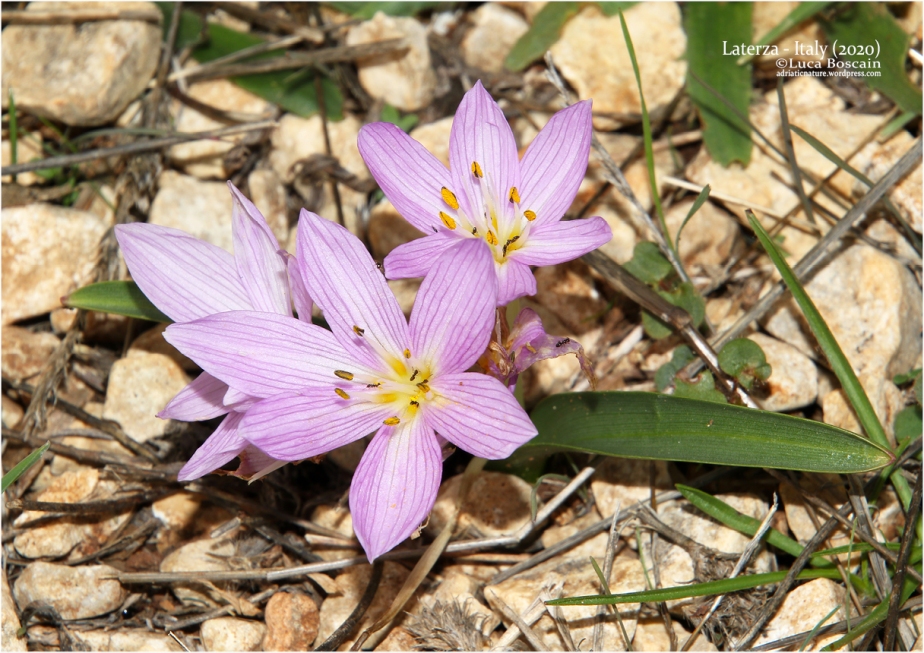In 2020 I traveled extensively in southern Italy, from Abruzzo to Calabria and Apulia, visiting a number of touristic localities and national parks (Cilento, Pollino, Murge, Majella) and photographing some interesting late blooms and other wildlife in a rather unexpected time of the year: October.
I usually travel with my girlfriend in this month because it comes in between when I finish to lead the Naturetrek tours and when I start to teach again at school: the destination of the trip, with the beginning of the first Covid-19 autumn, was obligatorily in Italy, so we decided to explore the southern part of the peninsula, where I traveled very rarely in the past, preferring more exotic destinations.
We started from Abruzzo, where I had been some times in the Abruzzo, Lazio and Molise national park (link), but not in the other national parks, and we didn’t find amazing weather conditions: we visited the fascinating Campo Imperatore plateau, the “Little Tibet” inside the Gran Sasso e Monti della Laga national park, under heavy rain that turned later in a snow storm, so I couldn’t look too much for wildlife.

We found a slightly better weather at the Rocca Calascio, at an altitude of 1,210m, in the foothills of the Gran Sasso massif: here the picturesque upper part of the village, that surrounds the fortress, was almost uninhabited and, while enjoying the glimpses of sunshine on the landscape, I noticed interesting late flowers like the knapweed Centaurea ambigua and the Italian Bellflower (Campanula fragilis), both endemic of peninsular Italy, plus Rock Knapweed (Centaurea rupestris), Monte Gargano Dead-Nettle (Lamium garganicum) and Italian Eryngo (Eryngium amethystinum), all in bloom despite the cold temperatures.





We found the sunshine on another day in Abruzzo, visiting the Majella national park and hiking along the Blockhaus ridge. Being at about 2,000m of altitude, here the season of blooms was virtually over, with very few remaining flowers in the most sheltered crevices, including Fringe-flowered Gentian (Gentianopsis ciliata) and Oxford Ragwort (Senecio squalidus rupestris). Among the few birds, I had Golden Eagle, Coal Tit, Red-billed Chough, Crossbill and Rock Bunting, plus few migrants like Meadow Pipits, Siskins and Linnets.




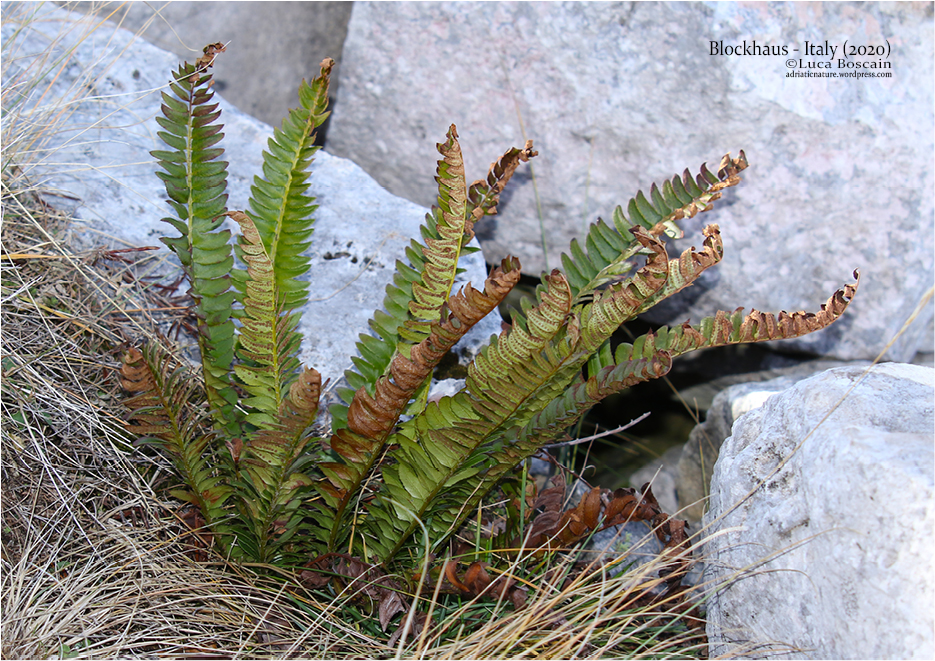
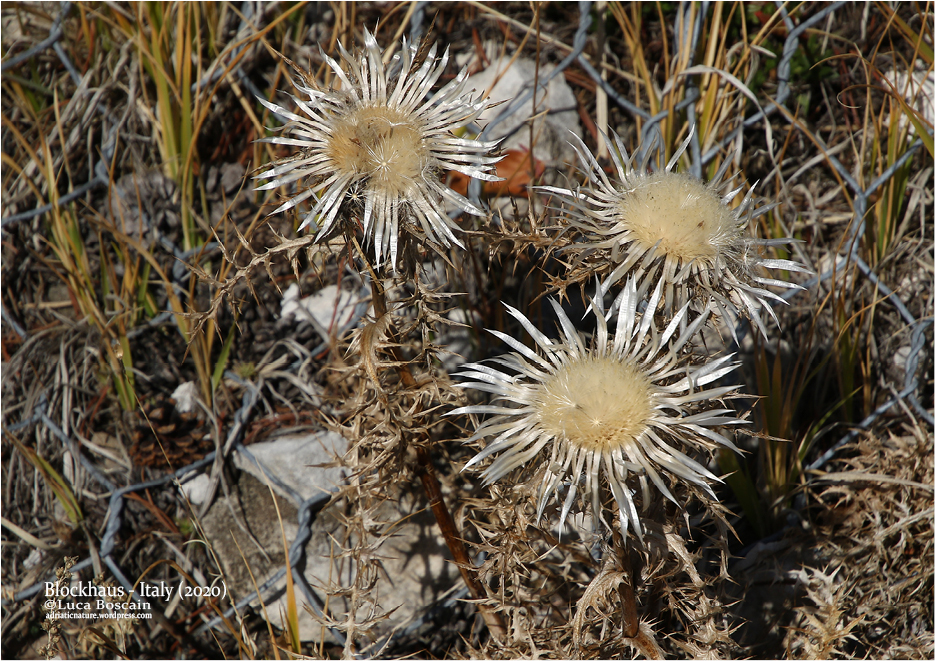
Molise is one of the smallest and less known regions in Italy: there are no national parks if not, marginally, the Abruzzo, Lazio and Molise national park. We spent only two days wandering in the western part of Molise and, under the flora point of view, the two places with some interesting species were Pietrabbondante (IS) and Guardiaregia – Campochiaro nature reserve (CB).
Pietrabbondante is the typical Molisan village settled on the top of a hill, with some scenic rocks emerging among the houses, and hosts a quiet archaeological site dating before the arrival of the Romans, when the Samnitic people was living in the area. Among the ruins of a theater and of some temples, I found blooming Eastern Tree-Mallow (Malva cfr. thuringiaca), Common Toadflax (Linaria vulgaris), Spiny Restharrow (Ononis spinosa) and again Centaurea cfr. ambigua.
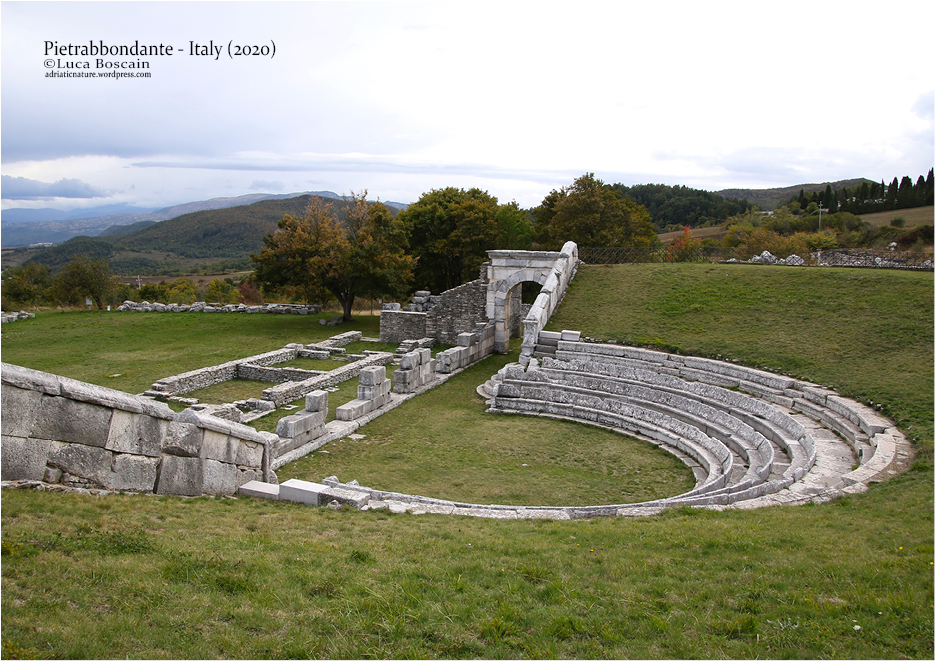


The “Riserva Regionale naturale di Guardiaregia – Campochiaro” protects an area of karstic habitats, with gorges, waterfalls and caves, not far from Campobasso. Having a walk around the “Gole del Quirino” gorges, we went through pastures and patches of Downy (Quercus pubescens) and Turkey Oak (Quercus cerris), reaching a view point from which I spotted a sough-after Wallcreeper (Tichodroma muraria). In the shady litter siding a stream, we noticed also some neo-metamorphosed Italian Stream Frogs (Rana italica) and, about the late flowers, Ivy-leaved Cyclamen (Cyclamen hederifolium), Chicory (Cichorium intybus) and Black Nightshade (Solanum nigrum).



From Guardiaregia, we drove shortly to cross the regional border and enter in Campania: we had a wander around the “lago del Matese” (CE) in the Matese plateau, protected by the Parco regionale del Matese. It’s a wonderful upland with an endorheic basin surrounded by Beech (Fagus sylvatica) forests and limestone mountains, that culminate with the mount Miletto (2,050 m), and it recalled us the Cerknica lake of Slovenia, often described in other posts of the blog (link-1, link-2). The lake is a well known for birding and at the time of our visit I noticed Common Pochard (Aythya ferina), Great Crested Grebe (Podiceps cristatus), Woodlark (Lullula arborea) and Great Grey Shrike (Lanius excubitor), a rare bird at this latitudes. Being at an altitude of 1,011 m, so late in the season most of the herbaceous species were over and I found only common species with few remaining flowers: Italian Eryngo (Eryngium amethystinum), Tansy (Tanacetum vulgare), mint (Mentha spp.), Common Soapwort (Saponaria officinalis), Common Yarrow (Achillea cfr. millefolium) and Creeping Thistle (Cirsium arvense).

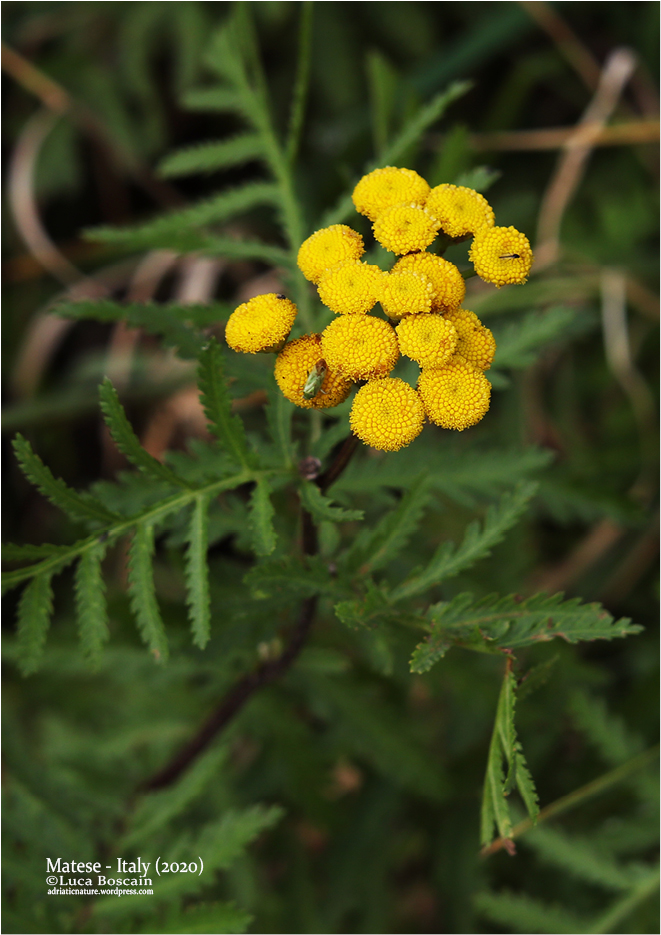

If in the mountains of Abruzzo and Molise we had gone far from the main paths, discovering rather unknown beauties, in Campania we couldn’t miss some of the most beautiful and popular historical heritages on Earth, like the Reggia di Caserta or Ercolano but, under the wildlife perspective, they were not particularly rich: beautiful patches of Ivy-leaved Cyclamens and some Barefoot Amanitas (Saproamanita vittadinii) in the huge park of Reggia di Caserta, Moorhens (Gallinula chloropus) and Blue Rock-thrush (Monticola solitarius) at Ercolano.

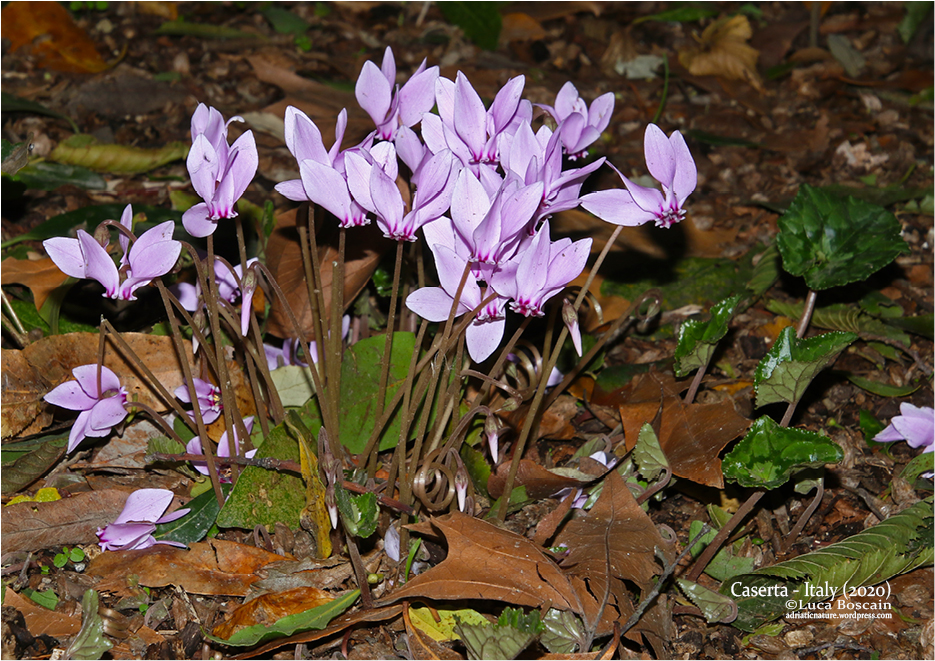

The Cilento, Vallo di Diano and Alburni National Park (SA), more in the south of Campania, was definitely much richer about the autumn flora: the coast, mitigated by the still warm waters of the Tyrrhenian sea, hosted lovely Mediterranean maquis with clearings covered in flowers!

From Salerno, were I noticed three Common Mynas (Acridotheres tristis) of an increasing introduced population, we drove southwards to the astonishing archaeological site of Paestum: among the great Doric temples, I found the white flowers of Sweet Alyssum (Lobularia maritima) and European Heliotrope (Heliotropium europaeum), plus a pair of Lesser Spotted Woodpeckers (Dryobates minor) and more than 20 other species of birds.

Less known in comparison with Paestum, the archaeological site of Velia, the ancient “Elea” where lived the Greek philosophers Parmenides and Zeno and the Latin writer Statius, was surely less spectacular about the remains of the ancient city, but not less fascinating about the history and the beauty of the setting, with a prominent medieval castle of “Castellammare della Bruca” dominating the valley and offering an amazing panorama.




At Palinuro, in the heart of the Cilento, Vallo di Diano and Alburni National Park, I finally found an explosion of autumn blooms, especially in the La Molpa hill, with meadows covered by Autumn Narcissus (Narcissus obsoletus) and Mediterranean Meadow Saffron (Colchicum cupanii), but also, here and there, the pink Dianthus rupicola, Red Odontites (Odontites vulgaris), Autumn Squill (Prospero autumnale), Sea Squill (Drimia pancration), Italian Crocus (Crocus longiflorus), Heath Leaved Rock Rose (Fumana ericifolia), Ivy-leaved Cyclamen, Southern Daisy (Bellis sylvestris), Lesser Calamint (Clinopodium cfr. nepeta), Tunicflower (Petrorhagia saxifraga), Rough Bindweed (Smilax aspera). Unfortunately, were not in flower some of the most iconic spring species, like the endemic Palinuro Primrose (Primula palinuri) or the rock-roses Cistus creticus and Cistus monspeliensis.
With the sunshine and a still enough warm sea water, I could even do some snorkeling and notice few insects, including interesting species like the African immigrants Plain Tiger Butterfly (Danaus chrysippus), Pea Blue (Lampides boeticus) and Violet Dropwing (Trithemis annulata).


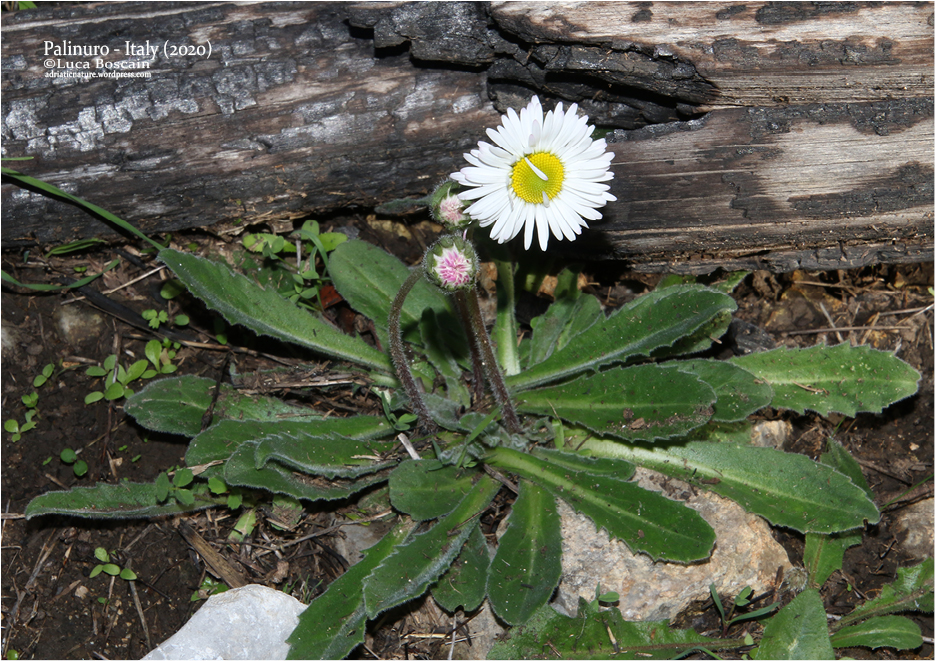


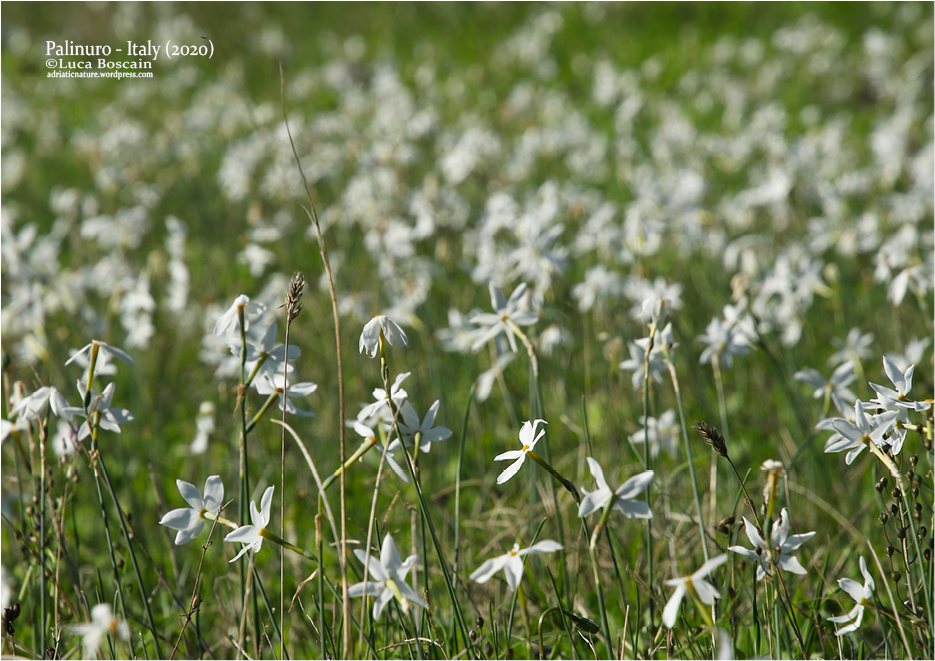







From the Cilento, we moved to the famous Pollino national park, divided in between the two regions of Basilicata and Calabria. It was the southernmost point of our trip but, despite this, we didn’t find there such a Mediterranean climate: we were in fact in one of the most important massifs in southern Italy with a maximum altitude of 2,267 m. Because of this, the late flora we encountered, hiking from Colle dell’Impiso to mount Pollino, was particularly limited: few flowers of the scabious Lomelosia crenata and leaves of helleborine orchid (Epipactis sp.), Spurge-Laurel (Daphne laureola), Myrtle Spurge (Euphorbia myrsinites), Livelong Saxifrage (Saxifraga paniculata), Wall Lettuce (Mycelis muralis), One-sided Wintergreen (Orthilia secunda) and Colt’s-Foot (Tussilago farfara). Bird fauna was also poor, with the best species among Woodlark, Meadow Pipit, Coal Tit, Marsh Tit, Common Tree-creeper, Siskin and Rock Bunting.
We first went through wonderful Beech forests in possibly the best time of the autumn to appreciate the fall foliage, then we arrived above the tree level where only few spectacular Bosnian Pines (Pinus heldreichii), the reason of our visit, grow: the landscape, with the weird shapes of those conifers, the red woodlands below, the yellow alpine pastures and the sunshine was just spectacular, possibly the best during our holiday!











Since in the Pollino I missed the endemic Calabrian Black Squirrel (Sciurus meridionalis), we went to look for it in the Bosco Magnano, nearby San Severino Lucano (PZ). Despite the efforts, we didn’t see both, the squirrel and the Middle Spotted Woodpecker, usually reported in the area by the kind Egidio Fulco, but we however visited an interesting forest of Turkey Oaks, Beeches, Common Alders (Alnus glutinosa), Field (Acer campestris) and Italian Maples (Acer opalus). In the undergrowth, I noticed European Holly (Ilex aquifolium), Butcher’s-Broom (Ruscus aculeatus), Tree Heath (Erica arborea), Ivy-leaved Cyclamen, Clustered Carline-Thistle (Carlina corymbosa) and a number of fungi.
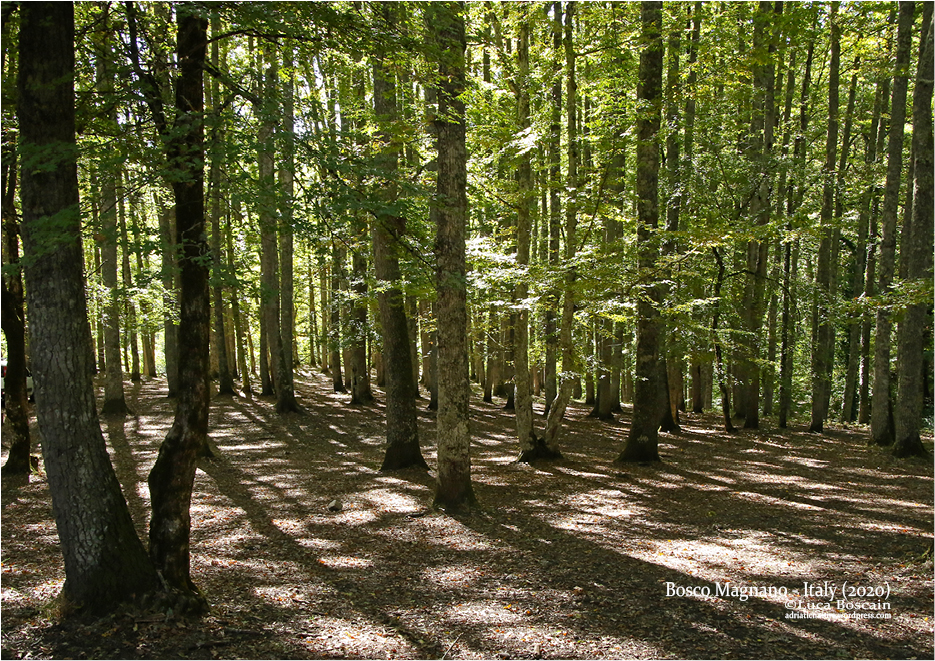




Matera, in Basilicata, is a town with no comparison in the world: with a history longer than two thousands years, during which people always lived in the caves that side a canyon (called gravina), in the Murge plateau, still hosts inhabited troglodyte houses together with new shops, restaurants and even hotels that re-use the ancient rooms and halls dug in the limestone cliffs.


If in breeding season the old town is home of one of the largest colonies in Europe of Lesser Kestrel (Falco naumanni), in autumn all the falcons were gone, but I still observed many Italian Sparrows (Passer italiae), subendemic of Italy, Blue Rock-thrush and Crested Lark, among the birds, and the gorgeous bluish flowers of the Various-coloured Bellflower (Campanula versicolor), endemic of eastern Basilicata, Apulia and southern Balkans, in the crevices of houses and cliffs.


We found other lovely blooms not far from the town centre, on the Murgia Timone plateau or around the lake San Giuliano.
Murgia Timone hosts a number of troglodyte churches and huts that were closed at the time of our visit, possibly because of Covid-19 restrictions, but offered a wonderful view of all Matera from the other side of the canyon and, here and there, a good variety of late flowers: Mediterranean Meadow Saffron (Colchicum cupanii), Yellow Bartsia (Odontites luteus), Tommasini’s Flax (Linum tommasinii), Winged Larkspur (Delphinium halteratum), Flax-leaved Daphne (Daphne gnidium), Southern Squinancywort (Asperula aristata), Seseli tortuosum, Lomelosia crenata, Winter Savory (Satureja montana) and Micromeria graeca.


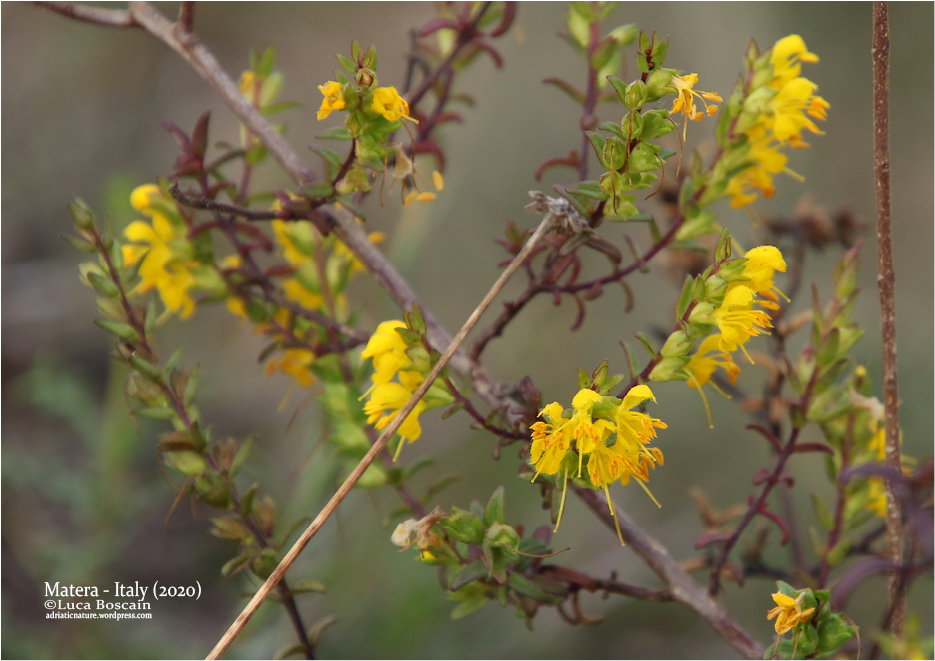




The San Giuliano lake is instead a rather known birding site, being one of the few freshwater basins in Basilicata, and at the time of my visit I observed Great Crested Grebe, Osprey, Red Kite, Common Sandpiper, Yellow-legged Gull and Firecrest, while about the flora the highlights were the bright yellow flowers of Winter Daffodil (Sternbergia lutea).

From Matera, we crossed once again a regional border, entering in the last southern region left to see: Apulia. Only half an hour of driving eastward and we arrived in the LIPU oasis of Gravina di Laterza (TA). Like the gravina of Matera, it was a deep gorge in the Murge plateau and it was protected in order to save one of the last breeding sites of Egyptian Vulture in the Italian peninsula. Despite this, I didn’t see there a single raptor or other interesting birds, while I found particularly nice the autumn flora, with lovely patches or carpets of Winter Daffodil, Ivy-leaved Cyclamen, Winter Savory, Autumn Buttercup (Ranunculus bullatus), Flax-leaved Daphne, Yellow Bartsia, Southern Daisy, Squirting Cucumber (Ecballium elaterium), Mediterranean Meadow Saffron, Sea Squill and Autumn Narcissus. Among the Mediterranean maquis of Green Olive Trees (Phillyrea latifolia), Mastics, Hoary (Cistus creticus) and Montpelier Rock-roses (Cistus monspeliensis), Western Prickly Junipers (Juniperus oxycedrus), Mediterranean Buckthorns (Rhamnus alaternus), Montpellier Maples (Acer monspessulanum) and Manna Ashes (Fraxinus ornus), there were two rare eastern species of short trees, Macedonian Oak (Quercus trojana) and Eastern Hornbeam (Carpinus orientalis), common in Greece but with a very limited distribution in Italy.


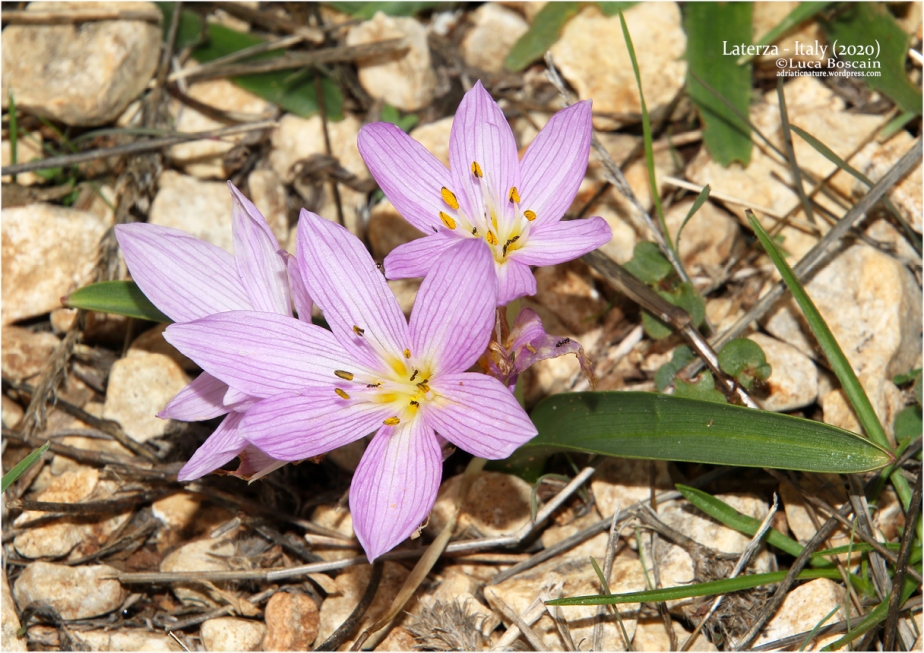


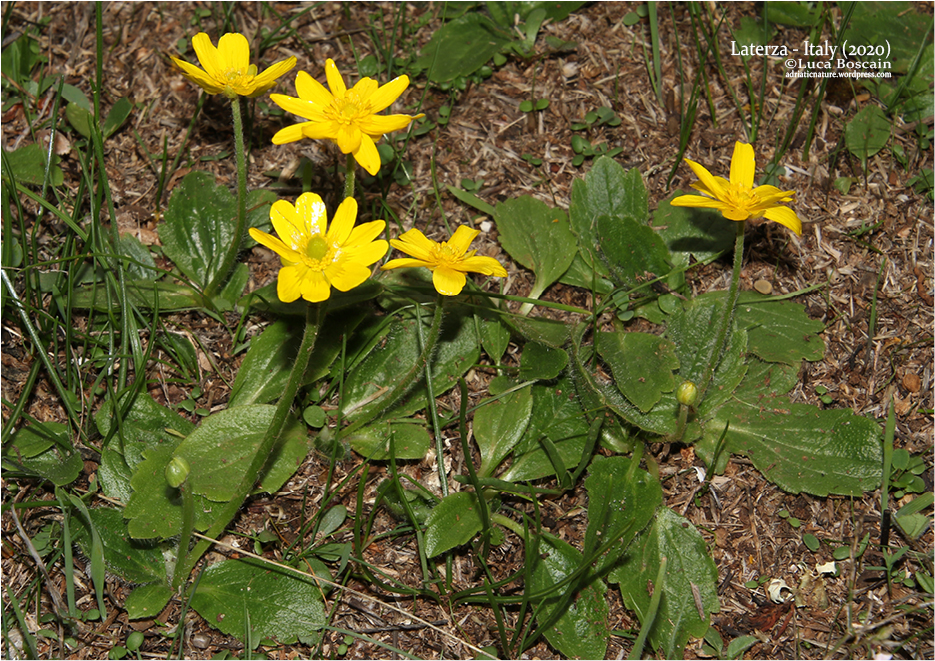
Half an hour of driving northward from Matera, instead, we visited the Alta Murgia national park around the town of Altamura (BA): they are wide hilly semi-steppic habitats, hunting grounds for Lesser Kestrels, Lanner Falcons and Red Kites, but home also of many other rare birds from Calandra and Short-toed Lark to Lesser Grey and Woodchat Shrike. Autumn is not the best season for birdwatching and, possibly also because of the strong winds, I only observed Peregrine Falcon, Crested and Skylarks, Meadow Pipits, Stonechats and Corn Buntings, together with two rare other animals, a reptile and a bush-cricket: Kotschy’s Gecko (Mediodactylus kotschyi) and Gargano Marbled Bush-Cricket (Eupholidoptera garganica), both present in Italy only in Apulia and Basilicata.
About the flora, I noticed in bloom first of all Crocus thomasii, endemic of southern Italy and central Dalmatia, and then Mediterranean Meadow Saffron, Winter Daffodil, Cantabrican Morning Glory (Convolvulus cantabrica), Nice Spurge (Euphorbia nicaeensis) and Winter Savory.
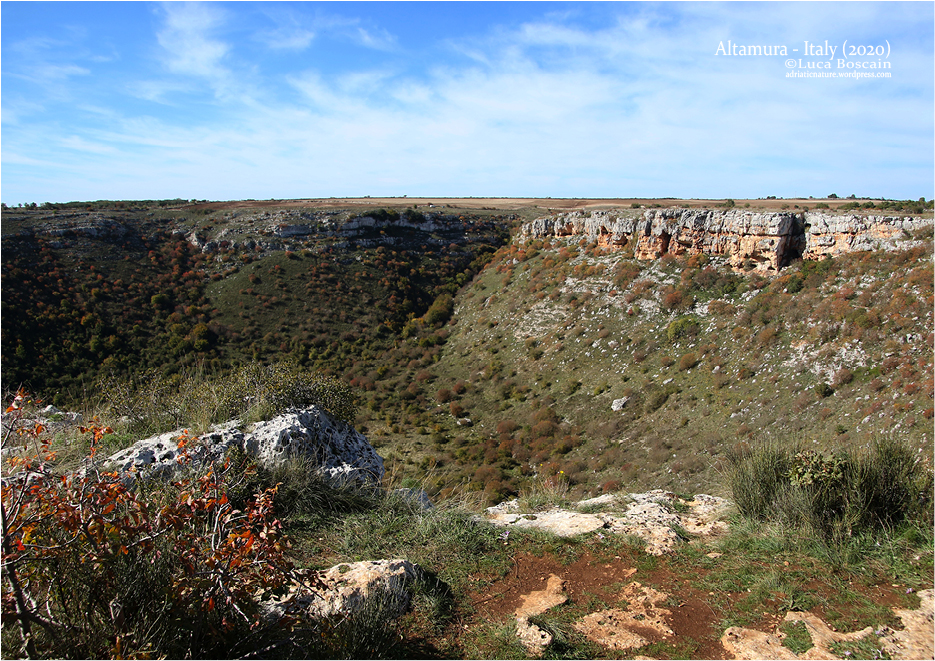
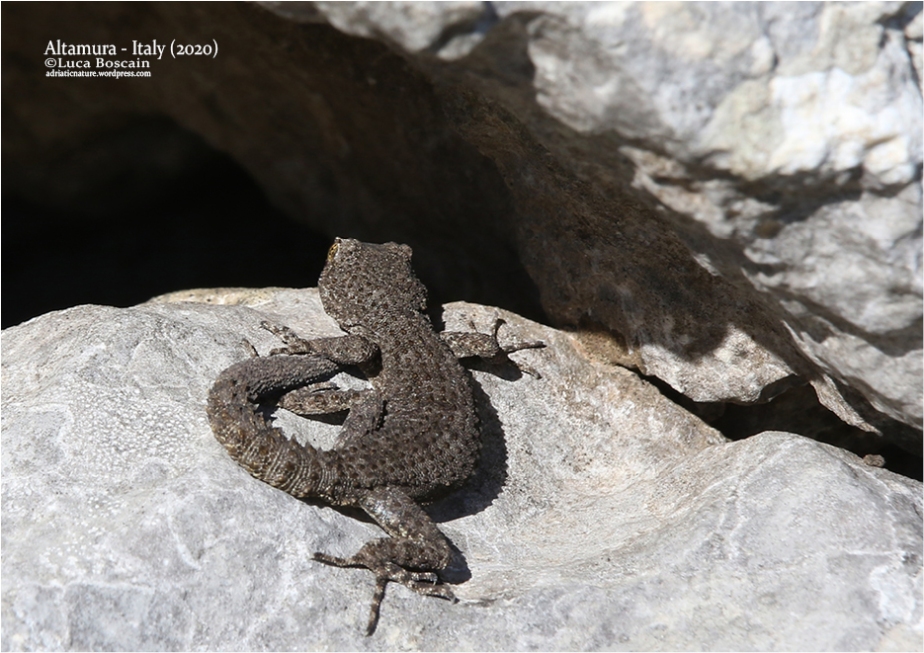

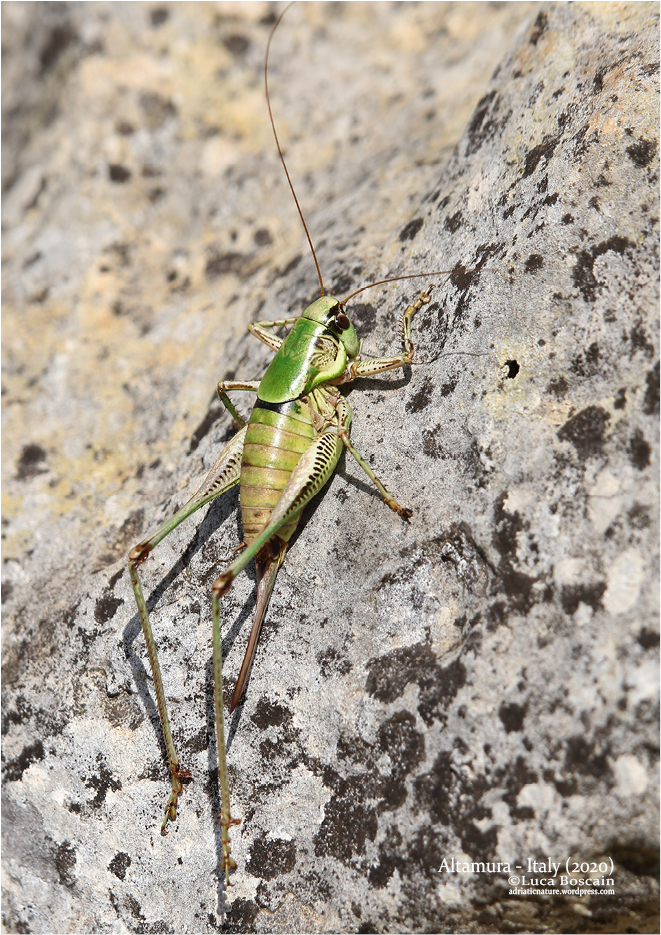

Since I had been already a couple of times in the Gargano peninsula (link-1, link-2), in the north of Apulia, we went to explore the Salento, the southern part of the region, moving mainly around Otranto (LE): we admired the first sunrise in Italy at Punta Palascìa, the easternmost point of the whole peninsula, and then we visited a number of sites along the coast, mainly interesting because of the special landscapes, like the faraglioni of Torre Sant’Andrea where I found the endemic pink Dianthus tarentinus.






Punta Palascìa, also known as Capo d’Otranto, was a fascinating place, possibly great also to intercept migrants, but once again the birding was slow, with only some Meadow Pipits, Robins, Black Redstarts and Siskins to show that some migration was in act.
Among the blooms noticed, surely the wonderful Various-coloured Bellflowers, but also Swallow-Wort (Vincetoxicum hirundinaria adriaticum), Flax-leaved Daphne, Micromeria graeca, Scorpion Senna (Hippocrepis emerus) and Bladder Campion (Silene vulgaris).
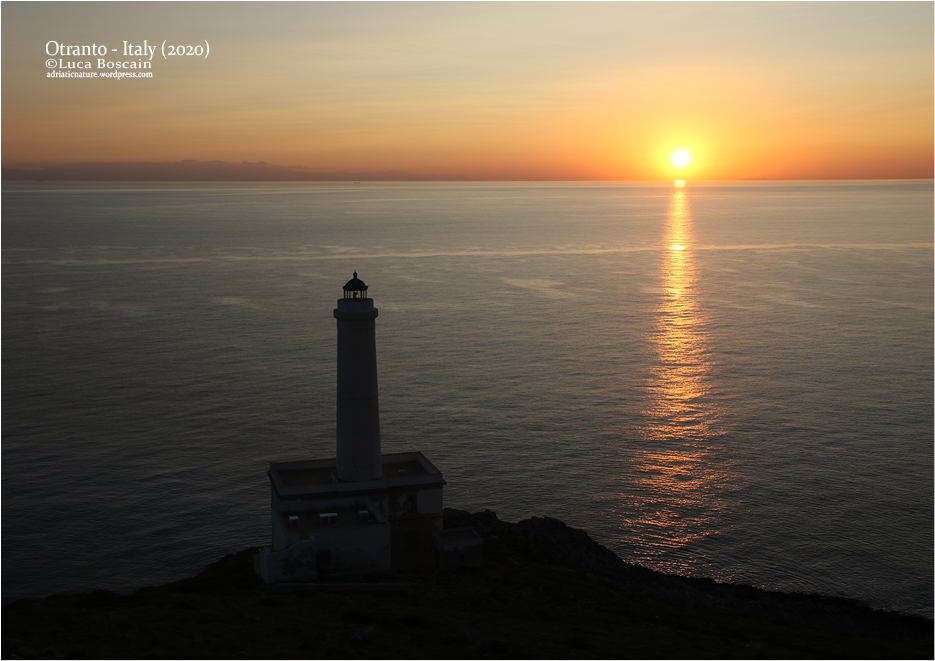



Another interesting stop was nearby the village of Tricase (LE), where we admired the Quercia dei Cento Cavalieri (the “hundred knights’ oak”): a huge six centuries old tree of Valonia Oak (Quercus ithaburensis macrolepis) in the only Italian grove and, possibly, in the westernmost population of this eastern Mediterranean species.

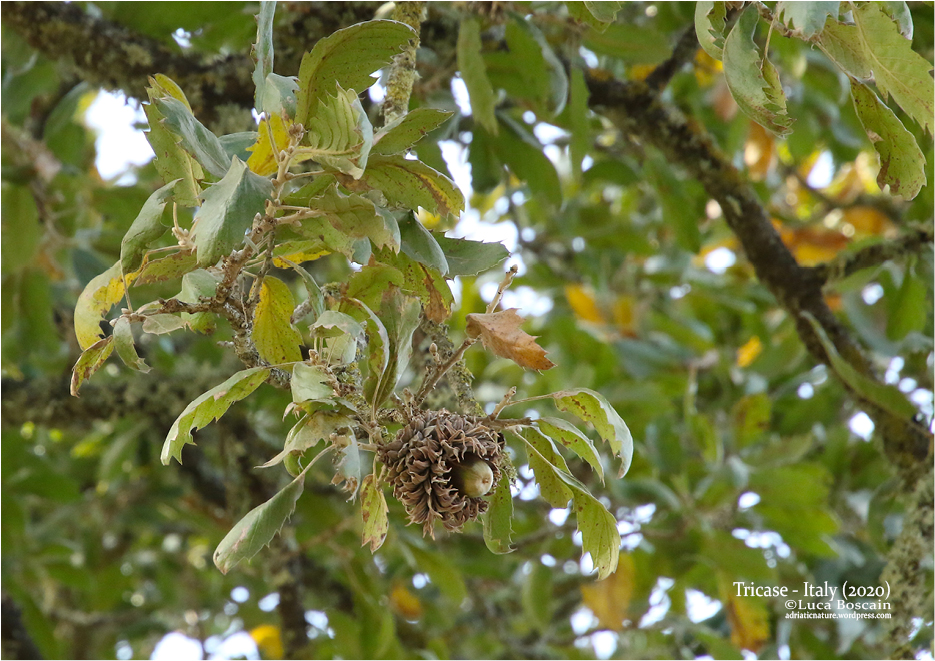
Since we didn’t arrive to Santa Maria di Leuca, our southernmost point reached in Apulia was the Pescoluse beach, where I had my last swim and snorkeling the 27th of October. On the beach, in a graveyard of dead stems of Sea Daffodil (Pancratium maritimum), we found a still fresh flower: the last surprise of our wonderful autumn trip to southern Italy.

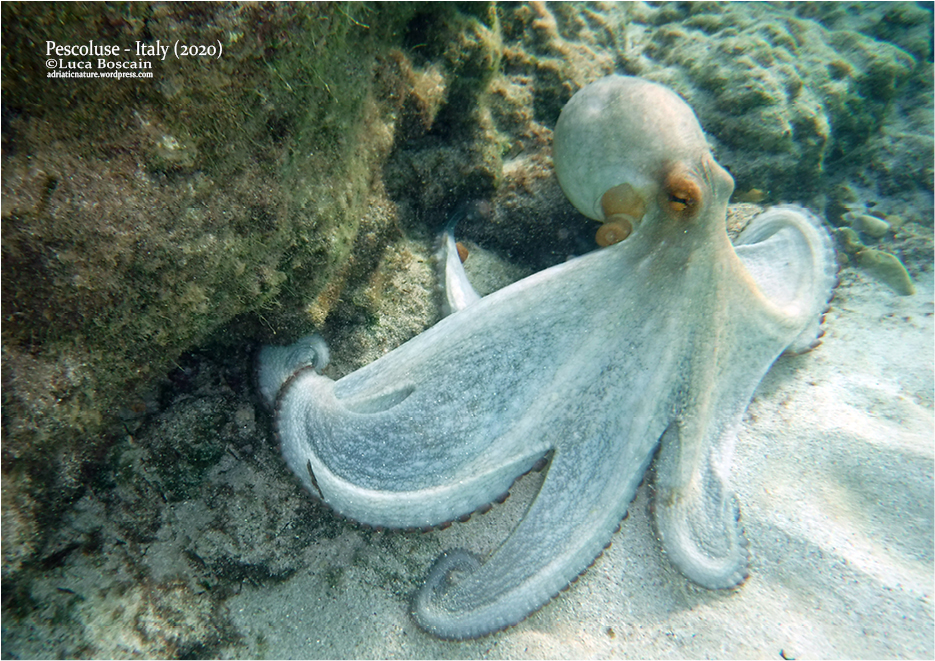

Luca Boscain

